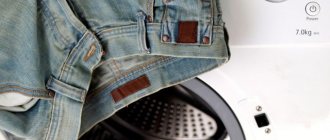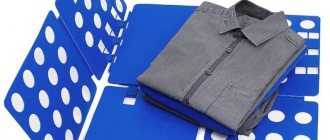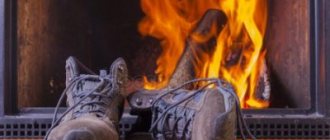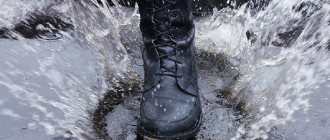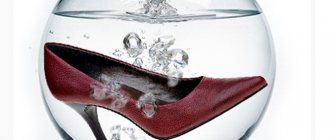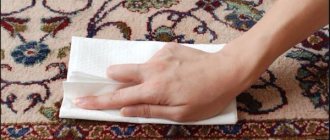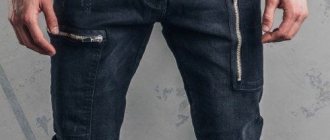Natural drying
Drying in the fresh air has its advantages:
- there is still free space at home;
- there are no hanging ropes or placed drying racks.
The only rule is that the ropes must be clean so that there are no dirty marks left on the fabric. And you need to secure your clothes with clothespins so that they don’t blow away in the wind.
Sun
Heat and light speed up drying. The main condition for drying in the sun is to turn the clothes inside out. Textile paints quickly fade from sunlight and become dull.
Freezing
Before drying clothes in the cold, add salt to the rinse water to prevent your clothes from freezing. Wipe the clothesline with the saline solution as well, otherwise it will freeze to the laundry.
You cannot dry starched items in the cold.
Wind
You should not dry things in the wind, as it destroys the structure of the fabric and holes appear on the clothes.
Important information
Before drying clothes, the following conditions must be met:
- Study the information on the label.
- It is forbidden to dry clothes over an open fire (gas stove, fire)! This threatens a fire at worst, or a damaged item at best.
- It is forbidden to place laundry on electrical heating appliances. A short circuit and electric shock may result, which is life-threatening.
- You should stop using curling irons and hair straighteners. Electrical appliances can leave scorch marks and burn holes into the fabric.
You must always remember safety; there are methods for drying washed clothes that do not cause harm, if you approach the matter correctly.
Folding dryers and clothes lines
There are drying racks and clothes lines for hanging laundry. There is no clear answer to the question of which is better. But there are points that need to be taken into account.
Clotheslines
When choosing a rope, check it for:
- strength. The rope must be able to withstand heavy wet linen, especially bedding;
- stretching, which should be minimal so that the laundry does not fall to the floor.
Suitable:
- metal cable;
- plastic cord;
- polypropylene rope;
- jute cord;
- cotton rope.
Folding dryers
The material of the dryer is important here. It should be stable and not bend under the weight of wet laundry.
The dryer can be:
- aluminum;
- stainless steel;
- with enamel coating;
- chrome plated.
The most durable ones are chrome plated. They are more expensive than other types, but more durable.
Folding dryers come in different sizes, so you can find one that will fit into your apartment according to its dimensions.
For easy movement around the house, choose a product with wheels.
Household appliances for accelerated drying
Washing machine
You can dry your laundry in a washing machine with a drying function:
- Hot air flows into the washing machine.
- The drum rotates so that the laundry dries evenly.
- The water that comes out of the fabric is drained through a hose.
The process lasts about forty minutes.
This method is convenient, but not the most gentle, so it is better not to use it too often.
You can machine dry:
- synthetics;
- combined fabrics;
- cotton.
For items of this type, the dryer doubles as an iron, so once dry, you can put them on immediately.
Heat fan
Not the fastest, but effective way to dry wet things. Need to:
- Hang laundry on a drying rack or line.
- Install a fan to circulate air onto things.
- Turn it on.
Hairdryer
If you need to dry things very quickly, you can use a hair dryer.
- Lay your clothes out on a flat surface or hang them up.
- Turn the hairdryer on medium setting.
- Point it at the clothes and slowly blow them, first from the front side and then from the back.
Iron
To iron dry clothes:
- Lay it out on an ironing board or flat surface.
- Iron from the front side.
- Turn inside out and iron again.
- Hang it on the back of a chair for 15 minutes.
- Repeat the procedure.
When drying with an iron, do not use steam.
Air conditioner
There are some fabrics that should not be dried in a tumble dryer, for example:
- tulle;
- things with decorations;
- nylon.
You can use air conditioner to dry them. You just need to lay out the product where the air flow from the air conditioner will flow, and turn on the device in warm blowing mode.
You can dry under air conditioning:
- down jackets;
- pillows stuffed with feathers;
- new knitwear items;
- woolen clothes.
Precautionary measures
Don’t rush to build a fire of friendship in the middle of the room. Read safety tips:
- It is strictly forbidden to dry things over a gas burner or in a gas oven. You can not only burn holes in your clothes, but also burn down your apartment.
- Do not hang things on electric radiators, heat fans, or heat guns. If the devices malfunction, you may get an electric shock.
- Do not put laundry in the microwave. Fabric fibers, literally, are cooked and destroyed.
As for the hair dryer, we will not completely prohibit its use. But always keep in mind that this device is not suitable for drying clothes; it overheats very quickly and fails.
Emergency ways to dry very quickly
If clean and dry clothes are needed urgently, there are several emergency options.
Oven
To dry things in the oven, you need:
- Turn on the oven at 90–120 degrees.
- Place wet clothes on a baking sheet lined with food foil.
- Place it in the oven.
- Close the door a little. It cannot be completely closed.
- Turn things over on the baking sheet every 5 minutes.
Microwave
The method is more suitable for small things:
- socks;
- panties;
- children's clothing;
- shorts;
- T-shirts.
You will need:
- Place wet items on a rack inside the oven.
- Set to the highest power.
- Set the time to 30 seconds.
It will take several approaches (depending on the size of the item).
Electric dryer
Advantages of an electric dryer:
- does not make noise during operation;
- there is a shutdown timer;
- clothes dry quickly and evenly;
- heating eliminates up to 95% of bacteria;
- does not take up much space;
- does not require special installation;
- All mounting parts are included.
Types of electric dryers;
- floor;
- wall;
- ceiling;
- drum
Which one to choose, you need to decide based on your convenience.
Terry towel
The easiest way to dry things is with a terry towel.
- Lay out the towel.
- Place wet clothes on it.
- Roll it up or fold it into an envelope.
- Place a weight on top or press firmly several times so that the towel absorbs moisture.
Heating battery
If you don’t need dry clothes urgently, you can use a regular radiator. Just hang something on it, for example, at night. You will get it dry by morning.
Microwave drying method
A microwave allows you to quickly cook or heat food, but its use for drying clothes is highly undesirable. Items from everyday wardrobe most often have metal parts, the heating of which in a microwave radiation field is unacceptable. As a result of exposure to microwave waves, fires of the material are possible, as well as failure of the household appliance, so this method is rarely used to speed up the drying process. As a last resort, you can use the microwave to dry small wardrobe items, without any metal parts or trim, setting the power regulator at a level no higher than 600 W.
It is possible to dry clothes in an accelerated mode if the need arises. For this, both natural and artificially created conditions are used, due to which excess moisture quickly evaporates. By wisely using the proposed drying methods, you can achieve drying of things in a shorter time.
Rate this post
How to quickly dry different clothes
Socks
You can dry your socks quickly:
- in the microwave;
- in the oven;
- on an electric dryer;
- hairdryer
Tights
Both light and warm tights will dry quickly:
- in the microwave;
- in the oven;
- under the hairdryer;
- on an electric dryer.
Sweater
If you urgently need to put on something and it is wet, dry it:
- in the oven;
- in the washing machine on drying mode;
- on an electric dryer.
T-shirt, tank top
The fastest way to dry T-shirts or tank tops is:
- oven;
- microwave.
Bed sheets
Since laundry is a large item, quick drying is possible in:
- washing machine;
- electric dryer.
Shirt
To quickly dry your shirt, use:
- washing machine with drying function;
- electric dryer;
- iron.
Pants and trousers
To quickly rid your trousers of moisture, wrap them in a terry towel and weigh them down with something heavy and flat, and then iron them.
Jeans
First you need to squeeze out the moisture:
- Place jeans and a terry towel in the washing machine and turn it on spin cycle.
- Wrap them in a terry towel and press them down with something heavy (you can sit on top).
When excess moisture has been removed, you can begin drying. How to quickly dry jeans, read a separate article.
Shoes
Shoes are dried using:
- paper;
- fan;
- washing machine.
There is a separate article about how to dry wet shoes.
Wool sweater
Wool is dried:
- hairdryer with cold air supply;
- under the air conditioner.
Calculating the time
Knowing how to quickly dry things, you can easily calculate the time it takes to dry them. This will come in handy if you only have one pair of jeans or only a pair of socks left without holes. Drying clothes occurs in the process of removing moisture from the fibers of the fabric, so the drying speed will depend on five factors.
- Spin. The better you wring out the item, the faster it will dry.
- Material. Clothes made from natural materials dry more slowly than synthetic items, since silk, linen and cotton absorb moisture well. It also takes a lot of time for dense fabric to dry.
- Air circulation. Moisture from wet laundry will remain “hanging” near the dryer, preventing further evaporation. Therefore, it is important to create a draft: open a window, turn on the air conditioner or fan.
- Air temperature. High and low temperatures are almost equally effective in drying clothes quickly.
- Hanging density. On the dryer, hang bulky items on top, and small items on a lower level. Free space on the counter will help clothes dry faster.
Rules for drying different types of fabric
Wool
Woolen items cannot be dried vertically; they stretch out and lose their shape. You should not dry them in the washing machine either.
To rid wool of water, wrap the item in a towel, roll it up and blot it with your hands.
Linen
For linen fabrics, it is prohibited to use any type of drying other than natural. You can hang linen clothes on hangers and wait until they dry.
Viscose
Viscose, like linen, is not recommended to be dried in washing machines and electric dryers. Items made of viscose can be dried either by hanging them on a line or hangers, or by wrapping them in a towel.
Silk
Silk is a very vulnerable fabric. Do not hang silk items on a line. Hang it on a hanger or lay it out on a terry towel and wait until it dries.
Cotton
It is also better to lay out cotton clothes on a towel, and when they dry well but remain a little damp, they can be ironed.
Capron
Nylon is a very delicate fabric. To dry it, you need to blot it with a terry towel and then hang it on a clothesline.
Lavsan
Lavsan should be hung over the bathtub without spinning and wait until it dries. As a last resort, you can dry it briefly in a washing machine at a temperature of no more than 60 degrees.
To avoid ironing
To ensure that your clothes remain even and smooth after washing without using an iron, you should use these tips:
- Do not load the washing machine to maximum. Reduce automatic spin speed.
Before hanging, carefully shake off and straighten the clothes so that there are no wrinkles or creases in the fabric.- It is wise to use the capabilities of household appliances. Avoid over-drying, as the fabric will retain large and small folds for a long time.
- Avoid strong hand pressing.
- Properly fold and store washed items.
Hang suits, long dresses and skirts on hangers in the spacious closet compartment. Do the same with other types of clothing made from wrinkleable materials. Roll T-shirts and sweaters made of knitted fabric, as well as towels and bed linen into neat rolls and place them on shelves in a closet or chest of drawers.
